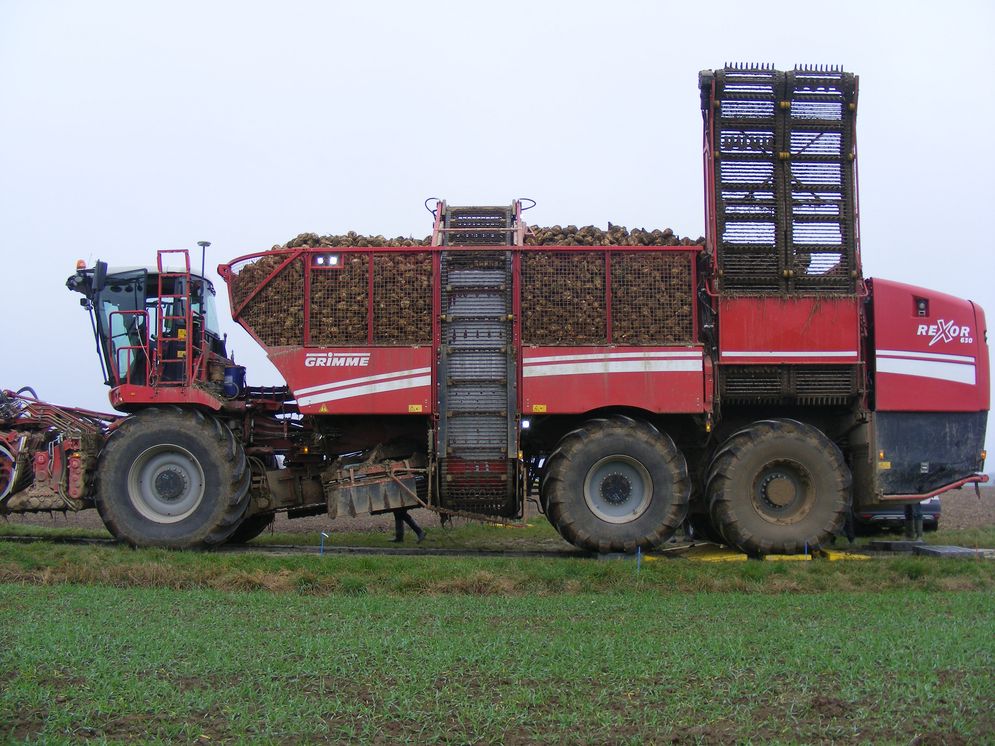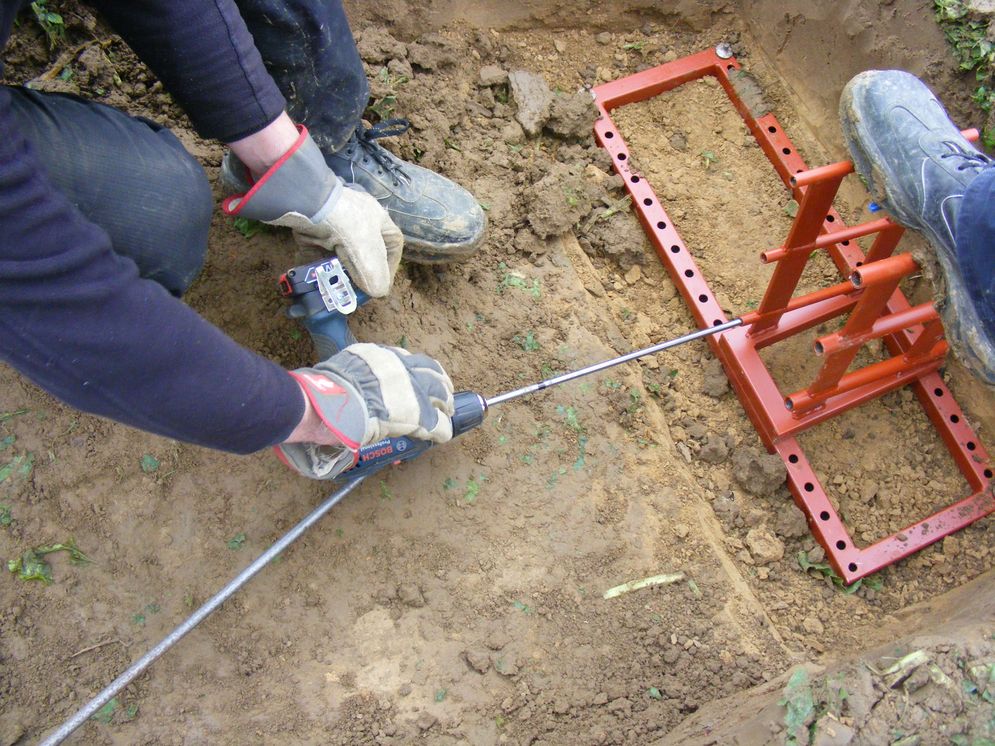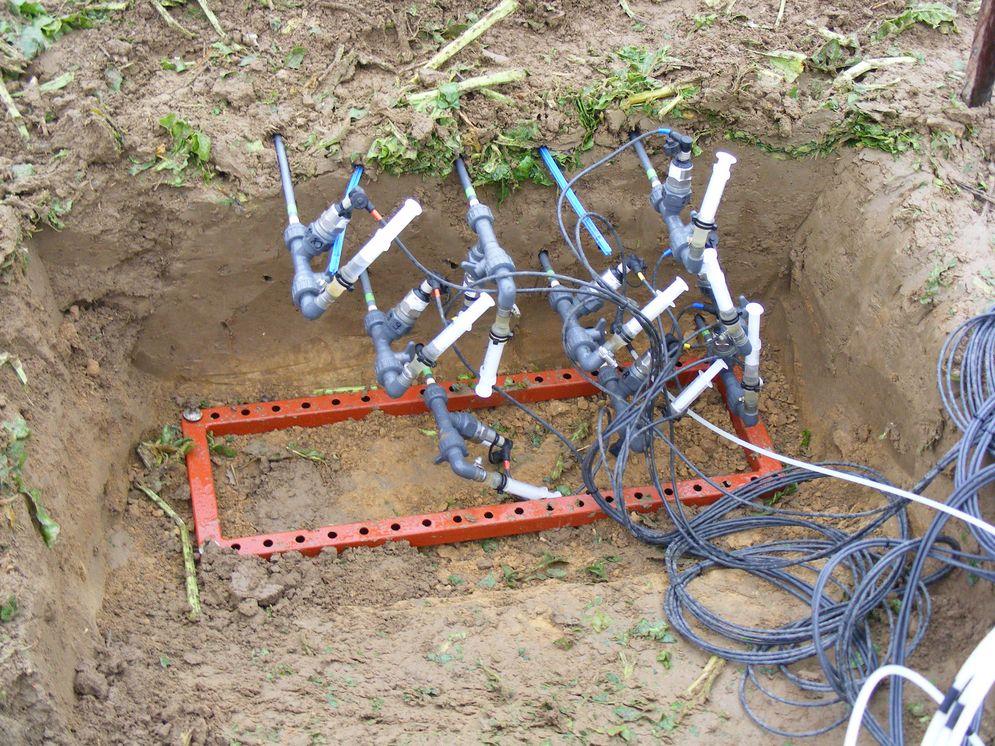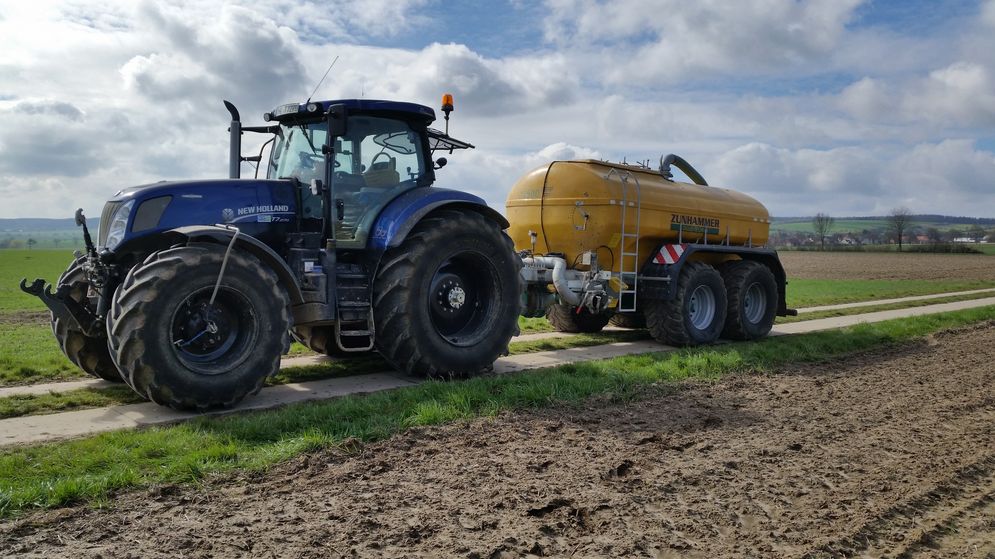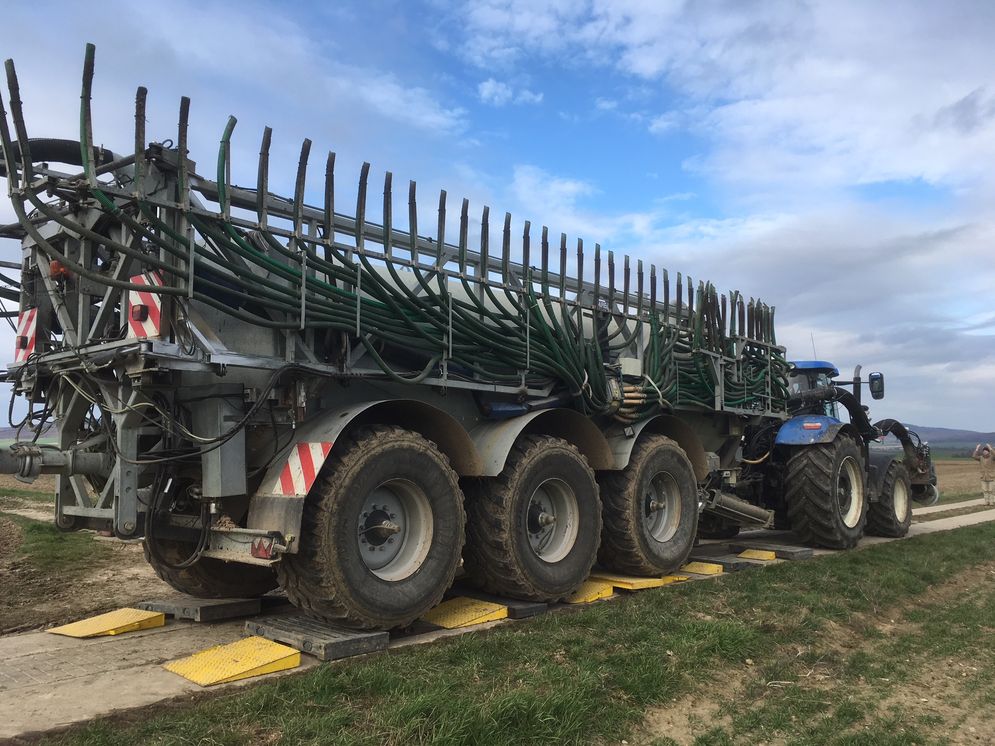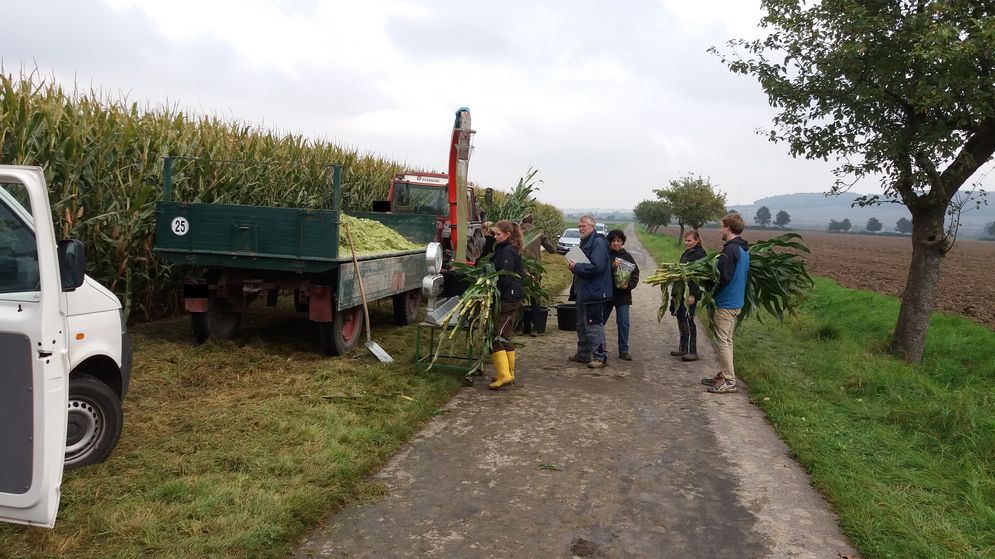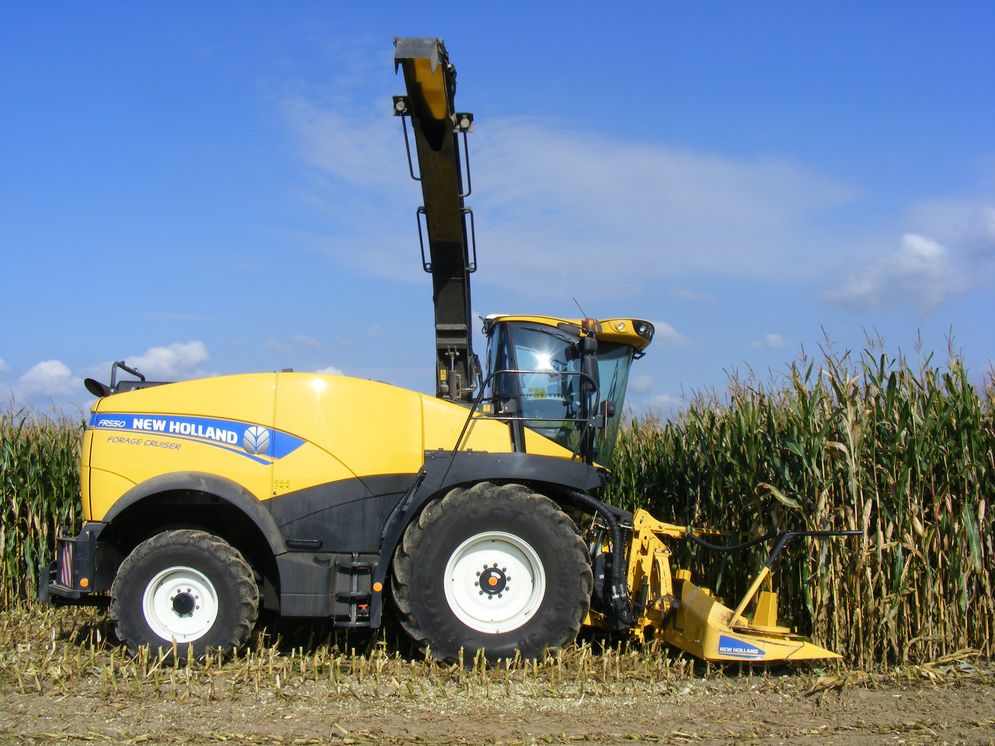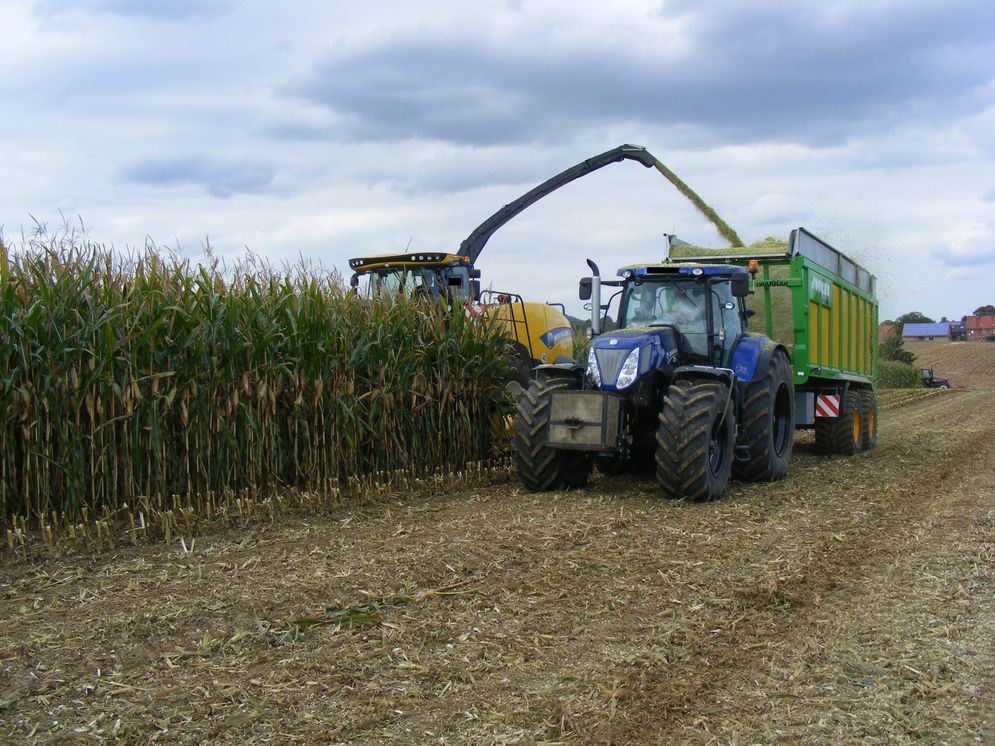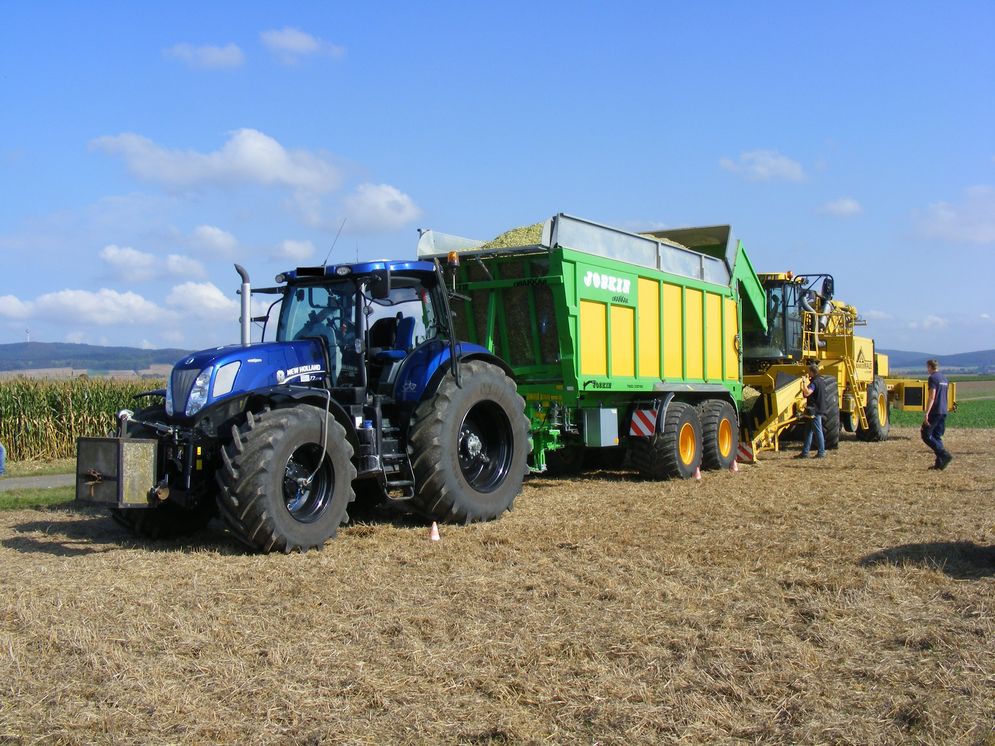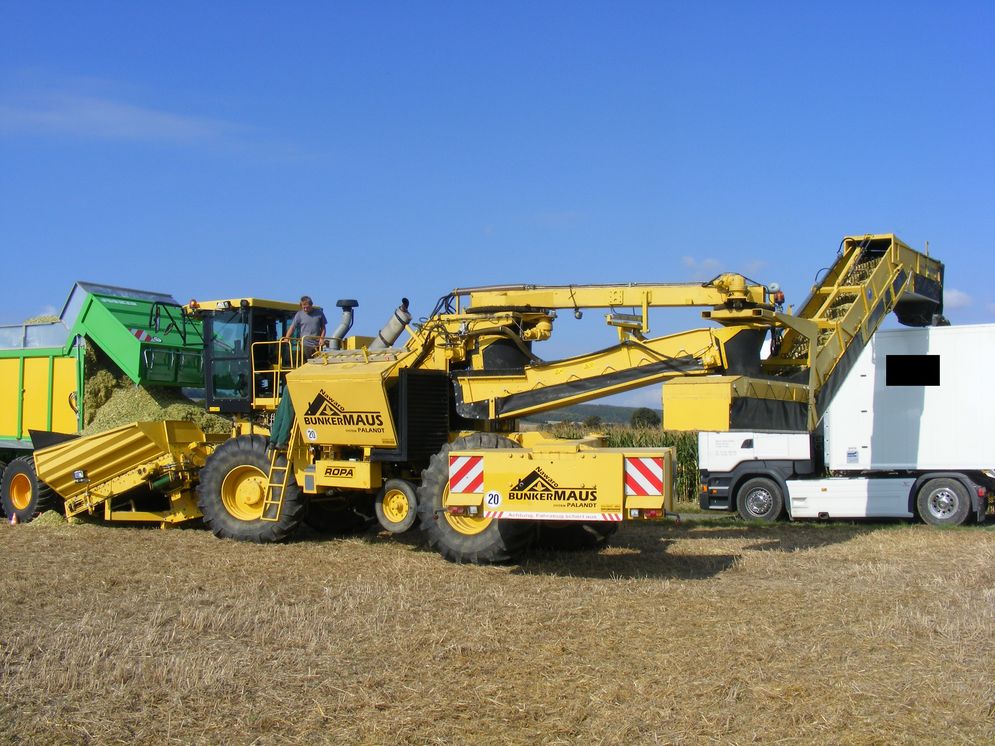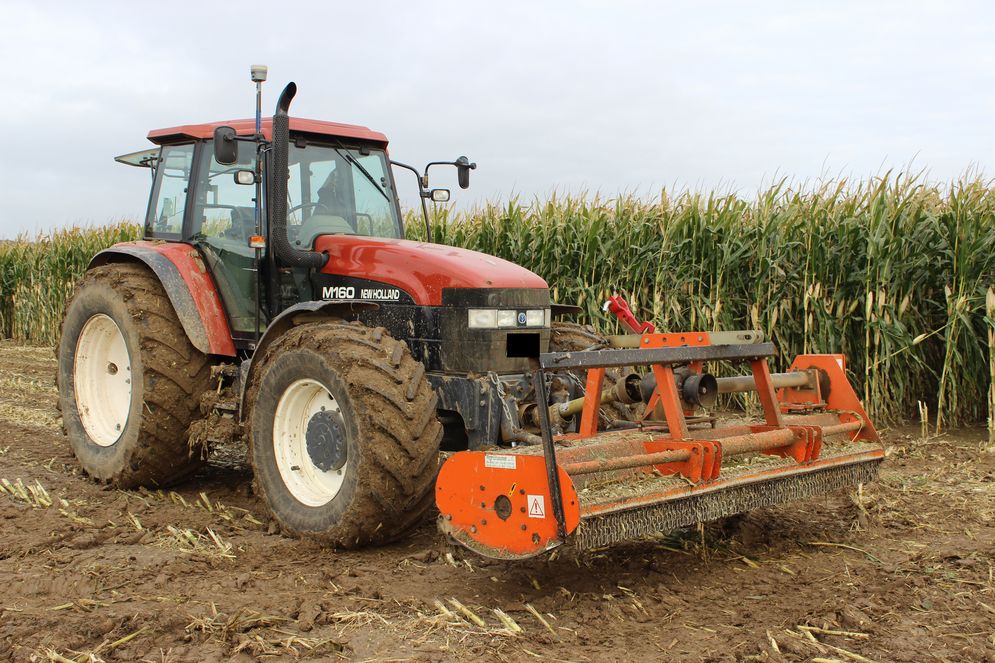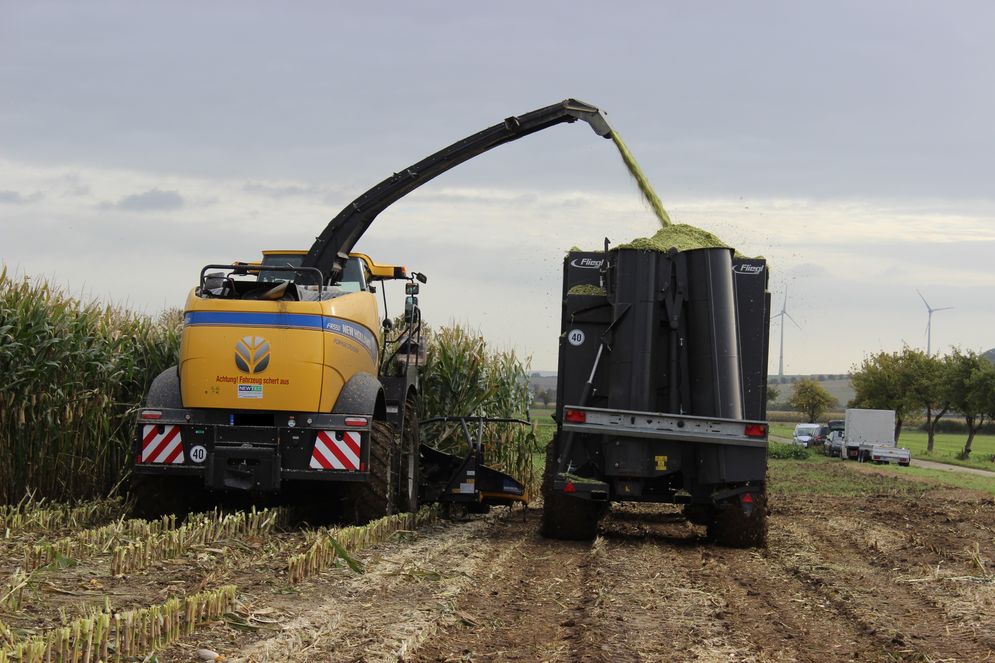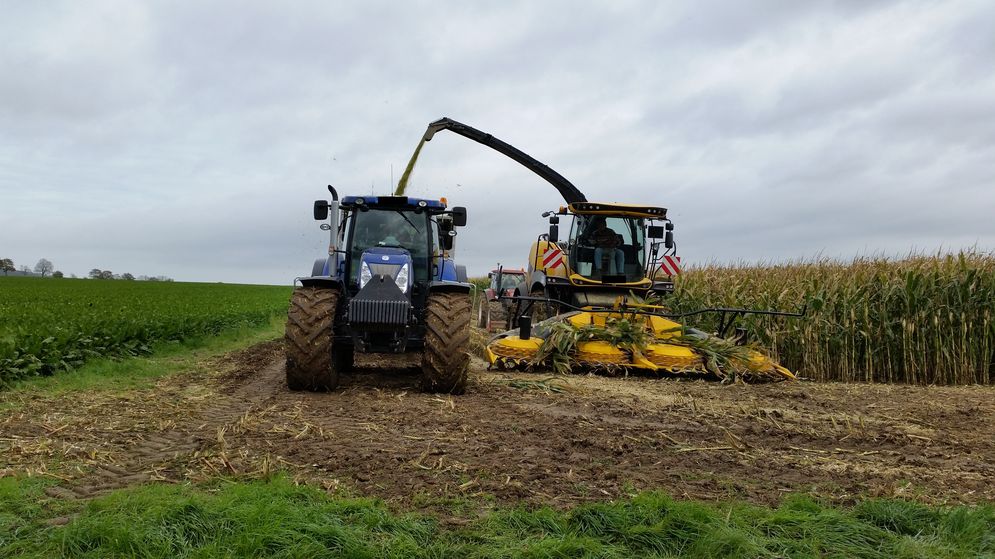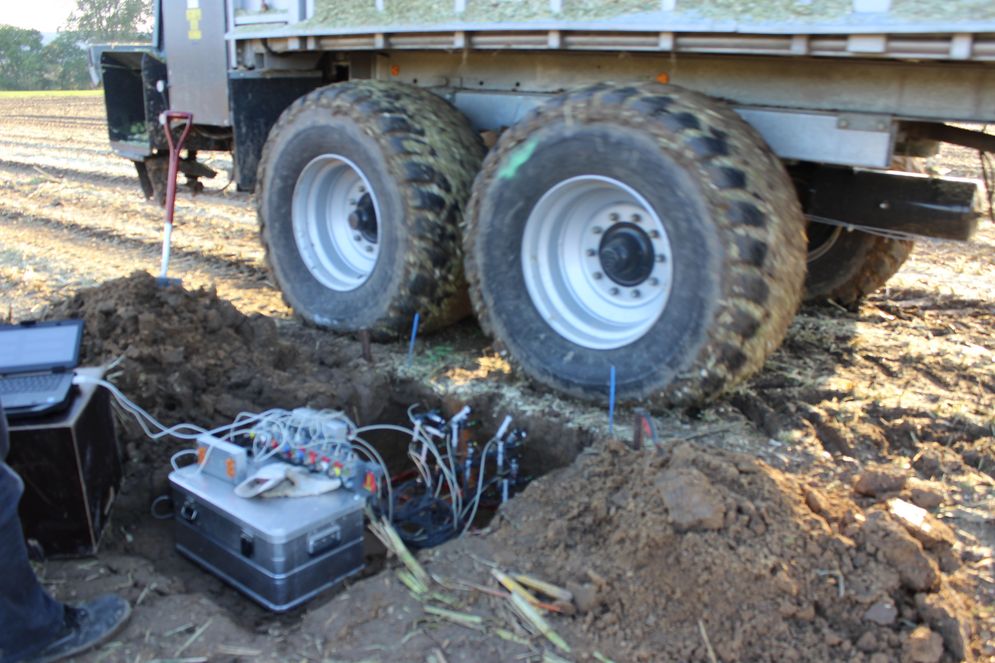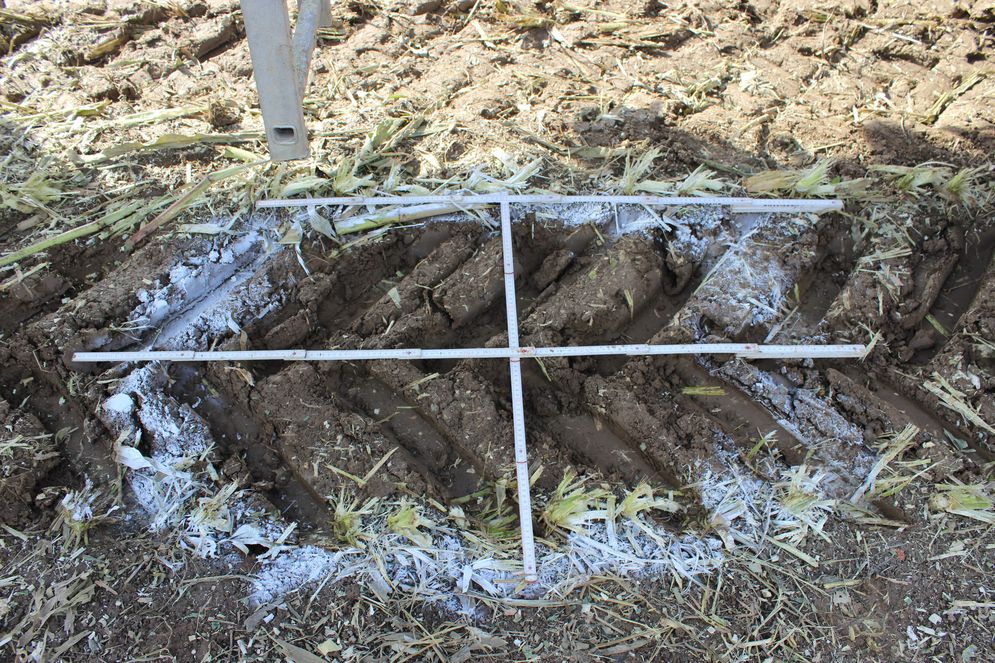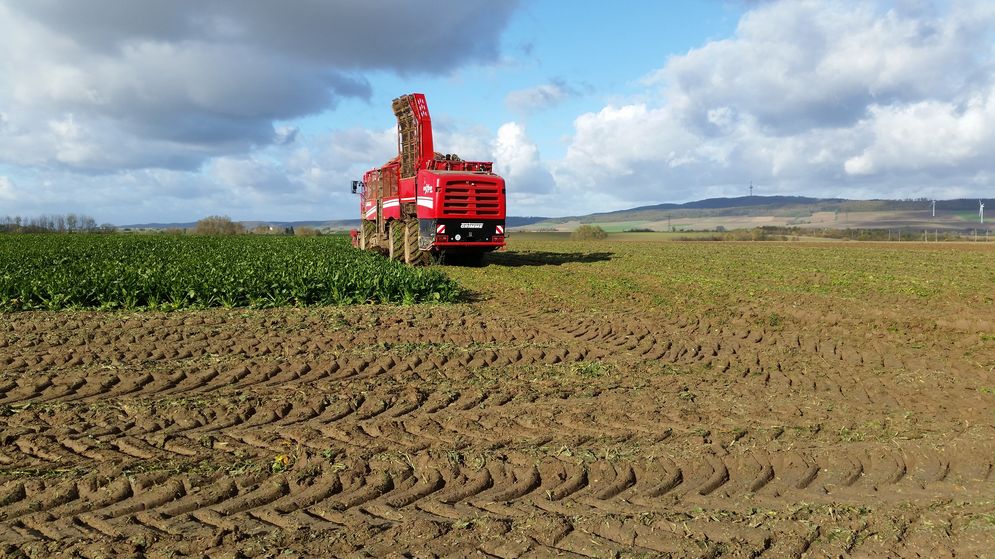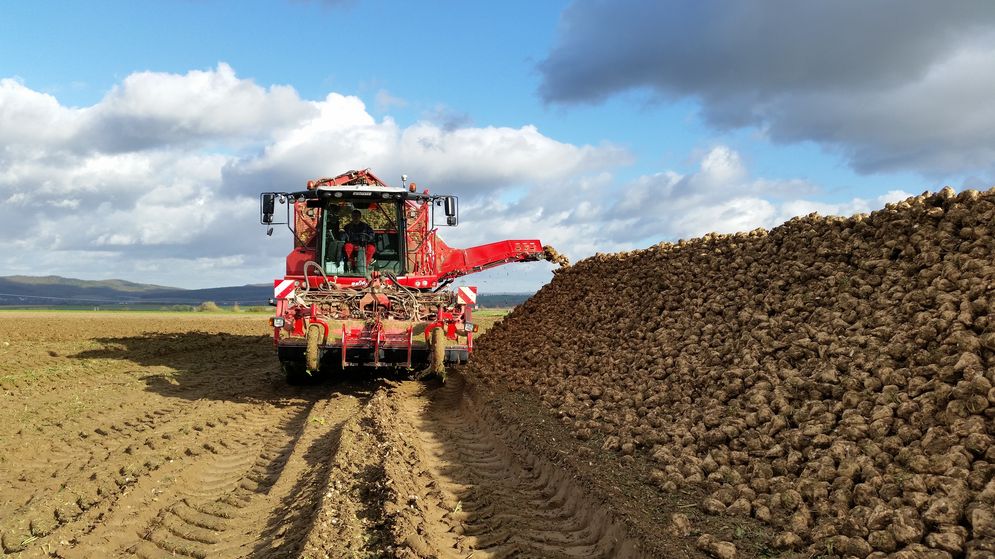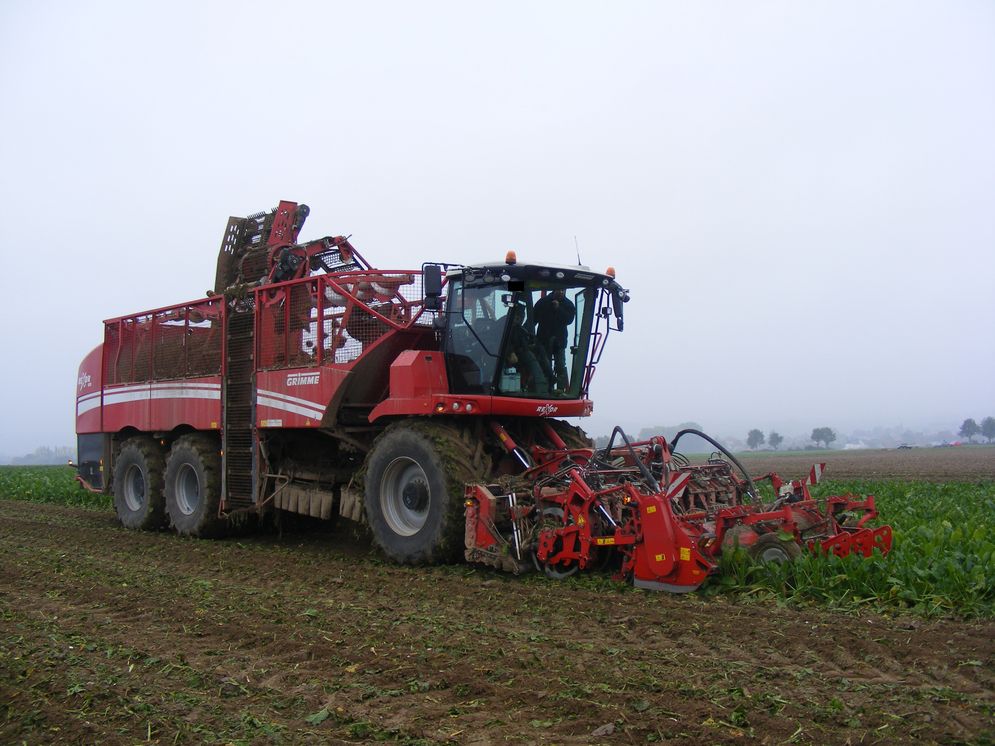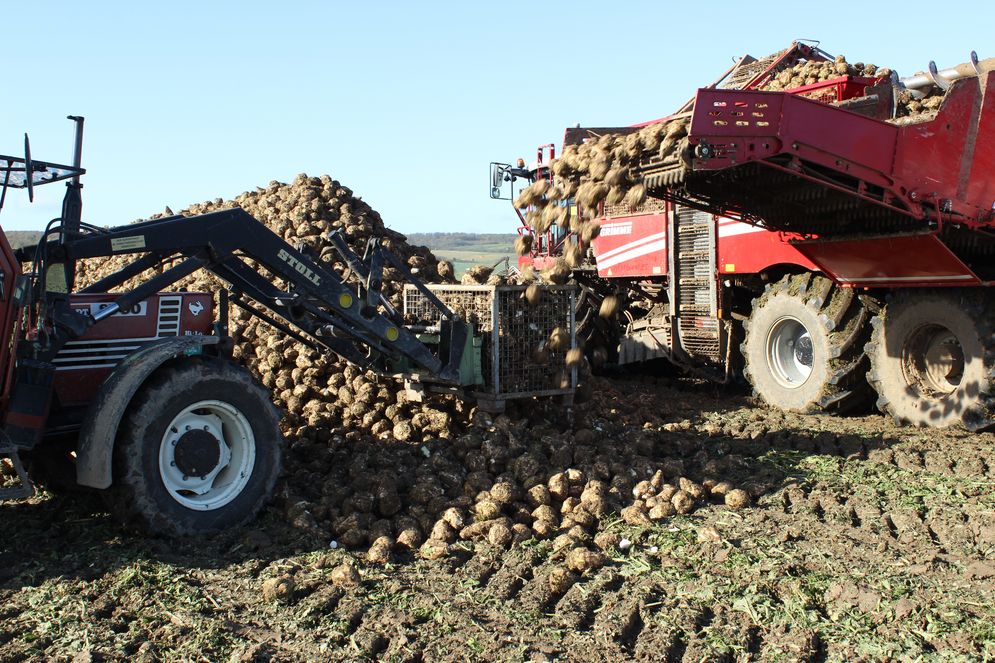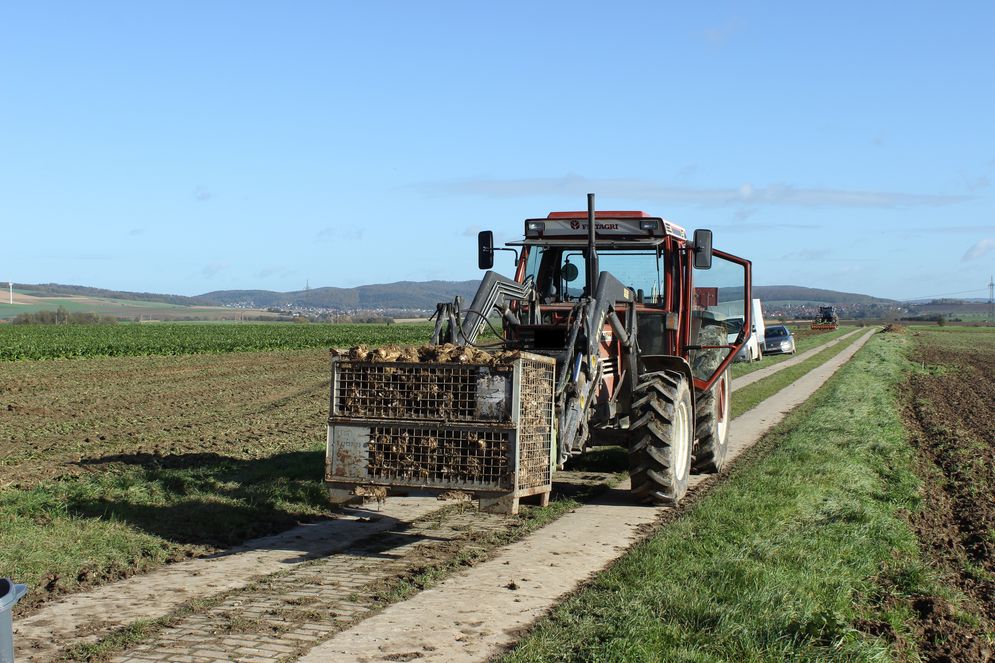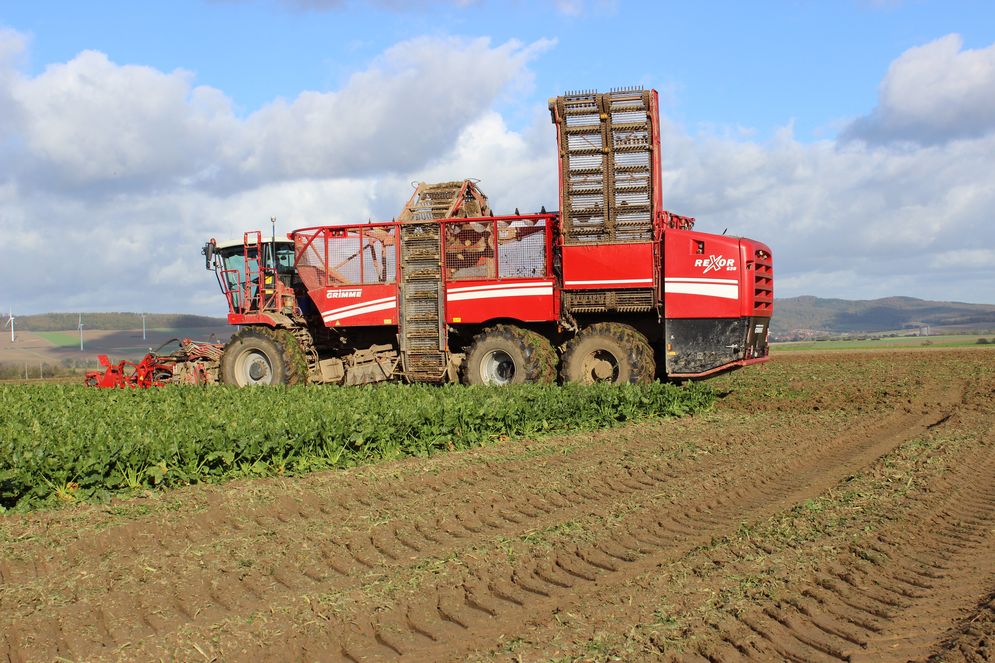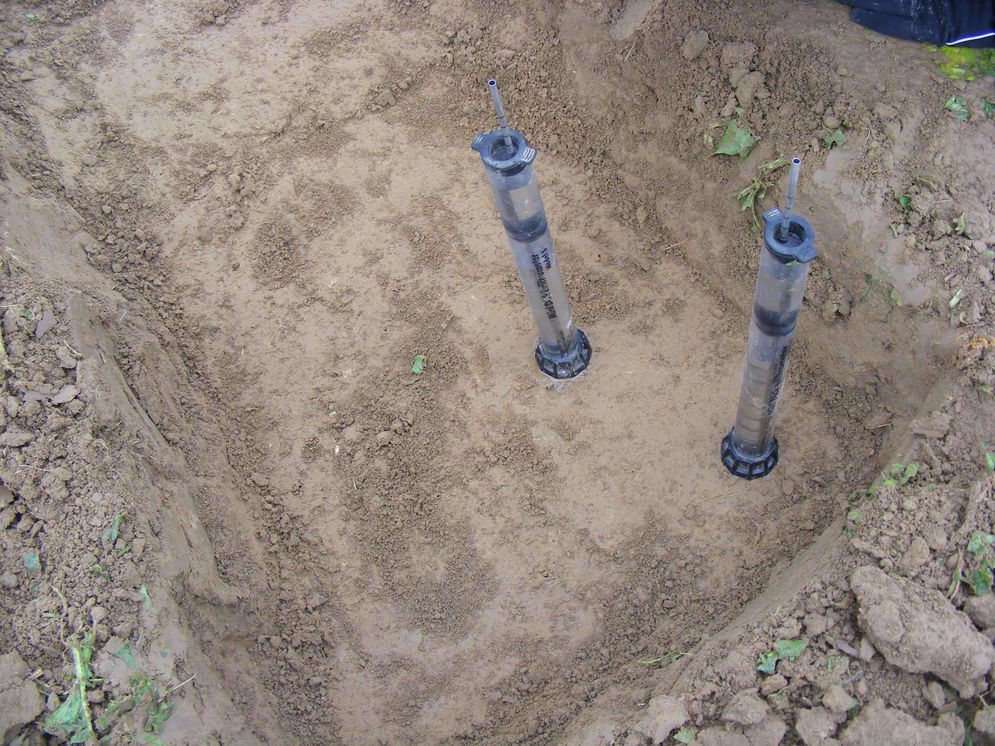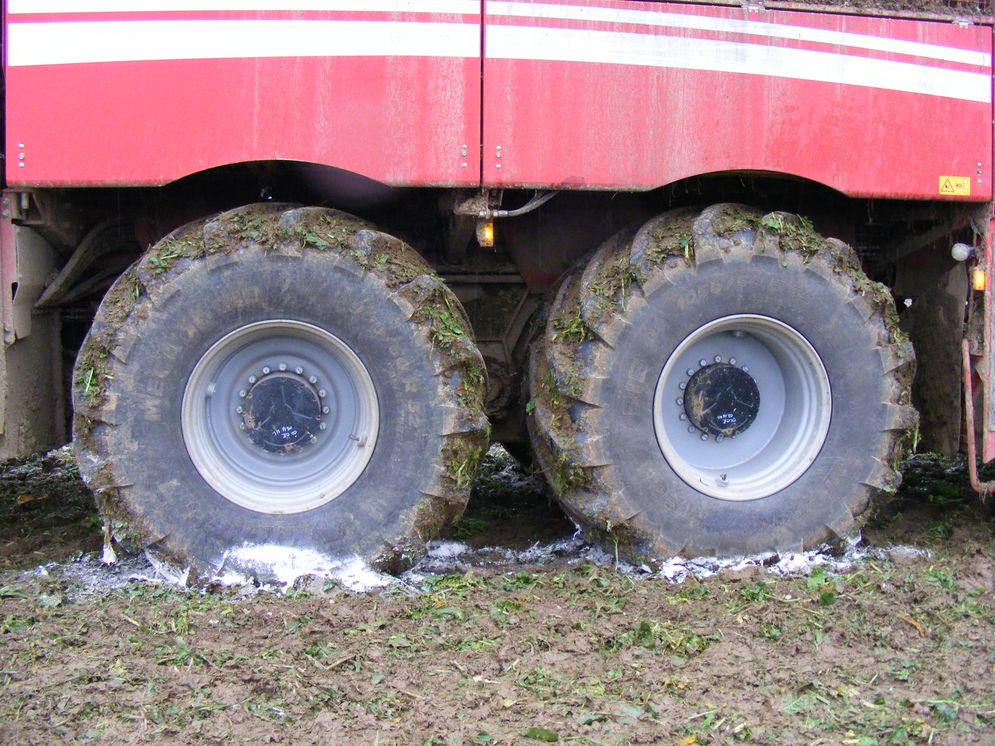Measurement and recording of the effects of machinery wheeling on soil pressure and deformation, soil structure, the various soil functions, and earthworm activity
The results of soil pressure and soil deformation alone cannot yet provide information about changes in soil structure and important soil functions. The additional investigation of soil samples showed that wheeling has a great influence on parameters such as bulk density, air capacity, and water conductivity.
In both the first and second phases of SoilAssist, the scientists conducted field trials with different agricultural machines and harvest chains. The SASS and the multi-channel measuring device are used to investigate soil pressure and soil deformation. To specify the effects of agricultural field transport on soil pressure, deformation, structure, and functions, we carry out field trials for different harvesting campaigns (winter wheat, silage corn and sugar beet) in summer and autumn as well as for slurry application in spring. Before the respective harvest campaigns, hand harvests are carried out to determine the yield of the respective crop in advance.
Vehicles
A combine harvester, a maize harvest chain (maize chopper, tractor with mulcher, tractor with different silo trucks) during silage maize harvesting and a three-axle beet harvester were examined. For the application of fermentation residues several application techniques were compared. A tractor with tandem slurry tank without incorporation, a self-propelled slurry tank with crab steering function and slurry injector, and a tractor with umbilical cord slurry spreading with cultivator injection were used. In the second phase of the project we were also able to examine a tractor with a tridem slurry tank.
The agricultural machines investigated were typical mechanization as they are used in our experimental region. All machines were used according to good professional practice and the tire inflation pressures were always adapted to current soil conditions.
The scientists take undisturbed soil cores at 20, 35, and 50 cm soil depth before and after vehicle passing (unwheeled / wheeled) and then examine the soil samples in the soil physical laboratory to record changes in soil structure and soil functions caused by the machines.
Weather
Weather conditions in the first project year 2016 were very dry. Only 166 mm of precipitation fell in the period from April to June and 137 mm in the summer months. Under these conditions, the soil was very firm and dry at all depths, which made it difficult to take undisturbed soil samples. In 2017, the soil on the investigated field sites was very moist. Between April and June 206 mm of precipitation fell. Especially in the summer months, large amounts of precipitation of 406 mm were recorded. As a result, the soil was very moist during the main harvesting campaigns. The water content in all soil depths was often above field capacity. Accordingly, the time windows for soil-conserving driving were very small. The third project year 2018 was characterized by a long period of drought. Only 142 mm of precipitation fell from April to July. Soil sampling was not possible this year, as the soil was so dry and firm down to 50 cm depth. Soil sampling rings could not be inserted into the soil. Also in 2019 (2nd project phase) the summer and thus harvesting months were characterized by extreme dryness. During these months, the focus was on hand harvesting the different crops and measuring using the SASS.
Biopores
On the four investigated arable fields of the SoilAssist focus farm, there is a high number of biopores (> 1 mm), especially earthworm channels, in all three investigated depths (20, 35, 50 cm). At a depth of 20 cm there are an average of 65 biopores/m² in the unwheeled area. The number of channels increases with depth. Especially at a depth of 50 cm, more than 200 % more biopores are often registered. The large number of these natural macropores led to the fact that the saturated hydraulic water conductivity sometimes showed very high values, even after wheeling with a machine. The decrease in the number of biopores after wheeling was small (10 % at a depth of 20 cm). In the subsoil 2-4 % less biopores were counted.
Influence of different mechanizations during fermentation residue spreading ...
Despite high soil moisture levels in spring, fermentation residue spreading can be conducted in most years without damaging the soil if using a technique adapted to the current soil conditions, such as umbilical cord slurry spreading.
The wet soil conditions often prevailing in spring (nearly field capacity) can lead to a deterioration of soil structure and damage of soil functions by the machinery used when spreading liquid manure and fermentation residues. These often have high wheel loads in combination with multiple wheel passes in the same track. For the investigations in the 1st project phase, a conventional slurry tank with tractor, a self-propelled slurry tank, and a tractor with umbilical cord slurry spreading technique were used. These spreading techniques are typical mechanizations of our test region.
With the lowest values for soil pressure and plastic deformation, umbilical cord slurry spreading was the most soil-conserving application technique. The highest values were measured for the parameters air capacity and saturated hydraulic conductivity. Due to soil-conserving crab steering and a low tire inflation pressure, the self-propelled slurry tank caused only low plastic deformation at a depth of 20 cm although having high wheel loads (10 t). If the same machine drives without crab steering (multipass), it causes a significantly higher deformation at a depth of 20 and 35 cm and lower values for air capacity and saturated hydraulic water conductivity. The conventional tandem slurry tank with tractor causes the greatest negative influence on soil functions and soil structure as well as the highest values for pressure and deformation. Soil deformation was also registered in the subsoil at a depth of 50 cm. The reason for this is the combination of high wheel loads and a high number of wheel passes. In the 2nd project phase, the same test was repeated to obtain a larger data basis. Additionally, a tractor with a tridem slurry tank was used. The results of the second test substantiate the results of the first test. Despite a higher wheel load and an additional wheeling in the same track, the tractor with tridem slurry tank did not cause a larger plastic deformation compared to the tandem slurry tank. Furthermore, no significant difference in the soil parameters dry bulk density or air capacity could be found between the two slurry tank variants.
Influence of a combine harvester in winter wheet harvest ...
The increasingly hot summers with low precipitation lead to a dry and firm soil structure. On the one hand, this leads to negative effects on crops with declining yields. On the other hand, the load bearing capacity of the soil increases, so that heavy machinery can be better supported.
The winter wheat harvest in the first project year took place under very dry soil conditions. Soil sampling on the headland was carried out at a location where the sugar beet clamp was stored the previous year. In the headland, even when not wheeled, the soil showed a high dry bulk density, very low values for air capacity, and, especially in the topsoil, low values for saturated hydraulic conductivity. The effects of the combine harvester used were investigated during and after an eightfold (headland) and twofold (inner field area) wheeling. No further deterioration of soil structure and soil functions was recorded after eight-fold rollover of the combine harvester with a cumulative wheel load of 34 t with a full grain tank. This was mainly due to the dry and firm soil conditions. Dry and firm soil has a higher soil bearing capacity than wet soil. So the wheeling of the combine harvester had hardly any influence on soil structure and soil functions in the inner field area. On the headland, a negative influence on the soil structure and soil functions was observed due to the bunker removal of the sugar beets in the previous year and the associated high number of wheel passes with the beet harvester as well as the storage of the sugar beet clamp.
In contrast to 2016, the winter wheat harvest in 2017 was carried out under very moist soil conditions. The current water content in all three soil depths was in the range of field capacity and above. The highest bulk densities in unwheeled area were registered in the headland. The eight wheel passes with the combine harvester on the headland led to an increase in density in 20 and 35 cm depth. Compared to the headland, the lowest bulk density was measured in the unwheeled inner field area. The two wheel passes with the combine resulted in an increase in bulk density in all three soil depths. A decrease in air capacity values was observed after wheeling both in the inner field area and in the headland. Especially in the inner field area at a depth of 20 cm, a decrease in air capacity of 37 % was observed, which is caused by the soil deformation of 6 mm after the two wheelings. Compared to 2016, it was found that the combine harvester with a full grain tank in 2017 had a greater influence on soil structure and soil functions due to the weather soil conditions.
Influence of silage maize harvest chain ...
A combination of moist soil conditions during harvesting, high wheel loads, and multiple wheeling lead to plastic deformation of the soil. Especially harvest chains as used for silage maize harvest can damage the soil and its functions if soil conditions are unfavourably moist.
During silage maize harvest, the scientists consciously decided to overload the chaff at the edge of the field for reasons of soil protection. For this purpose, we used a loading mouse or a push-off trailer, which overloads the chopped material onto waiting transport vehicles on the dirt road.
The harvest chain consists of a maize chopper, tractor with mulcher and tractor with silo truck (cumulated wheel load approx. 30 t). Silage maize harvest had the greatest influence on the soil structure and soil functions in 2017 due to the higher soil moisture. In the dry years 2016, 2018 and 2019 a low plastic soil deformation in the topsoil was registered. An increase in dry bulk density and a low decrease in air capacity was detected in 20 and 35 cm depth in 2016. In 50 cm depth no influence could be detected. The scientists also found that the soil is much more load-bearing in dry condition in this experiment. In the wet year 2017, the harvest chain caused a plastic deformation of more than 10 mm in the topsoil with an associated increase in dry bulk density. The air capacity decreased accordingly. At a depth of 50 cm, no influence was found with regard to soil pressure and deformation as well as soil structure and functions. The greatest influence on dry bulk density and on air capacity was exerted by the tractor with a full silo truck due to the four wheel passes in combination with high wheel load. The greatest mechanical load was found on the headlands.
The overloading area on the headland showed clearly limited soil functions and a disturbed soil structure after the harvest. This area had the highest dry bulk density and the lowest values for air capacity and saturated hydraulic conductivity. Although the area of overloading onto transport vehicles is severely impaired. Overloading at the edge of the field allows the tractor with silo truck to operate in the field with a low and soil-conserving tire inflation pressure. The inner field area is thus relieved and the load only increased on a small area on the headland.
In conventional silage maize harvesting, the tractors with silo trucks drive with road tire inflation pressure, as they bring the chopped material directly from the field to the biogas plant. The use of, for example, a loading mouse enables the transport vehicles to drive with low and soil-conserving tire inflation pressure.
Influence of a self-propelled three-axle sugar beet harvester …
A beet harvester with a total weight up to 60 t can be used soil-conserving if crab steering function is used and tire inflation pressure is low. Regarding good professional practice, this machine should not be used after extensive rainfall and on moist and poorly bearing soil. In that case harvest date should be adjusted as far as possible.
For the sugar beet harvest, a three-axle beet harvester was used in the first and second project phases. In 2016, the beet harvester with full and half-full bunker was investigated as well as the unwheeled headland and inner field area. After harvesting, soil samples were taken in the headland directly next to the beet clamp, where the beets were bunkered. The beet harvester with full bunker (approx. 10 t wheel load) had the greatest influence on the soil. Here the highest soil pressure and a plastic deformation of 6.5 mm was measured at a depth of 20 cm. At a depth of 35 cm a small influence could be measured. In 50 cm depth no more influence could be measured. Driving with full bunker resulted in a slight increase in dry bulk density at 20 and 35 cm depth and a decrease in the air capacity in the topsoil. The variant of the beet harvester with half-full bunker (approx. 8 t wheel load) caused a lower maximum soil pressure and a lower plastic deformation. This variant also caused an increase of dry bulk density and a decrease of air capacity at a depth of 20 cm.
The greatest impairment of soil structure and soil functions was found in the headland directly in front of the beet clamp. There was both an increase in dry bulk density and a sharp decrease in air capacity. The saturated hydraulic conductivity decreased by almost 100% at depths of 20 and 35 cm, resulting in values of < 1 cm per day. Also in the subsoil at a depth of 50 cm the conductivity decreased strongly by 68%. Due to the high wheel load of the full beet harvester in combination with the high number of wheel passes due to repeated bunker removal, the soil was severely affected down to a depth of 50 cm. The colleagues from CAU registered maximum values of up to 200 wheel passes during harvesting in parts of the headland. However, these disturbances of the soil structure and soil functions are concentrated in one area in the headland and do not apply to the inner field area.
To investigate the exact influence of the beet harvester on soil pressure and soil deformation in the headland, this experiment was repeated in 2019. For this purpose, the colleagues from CAU calculated the average wheel pass frequency on the headland in front of the beet clamp. An average of 18 wheel passes, i.e. 6 crossings with the harvester, take place in front of the beet clamp. This led to a plastic deformation of 10 mm in the topsoil. Plastic soil deformation was also found in the subsoil (approx. 5 mm at a depth of 35 cm and 3 mm at 50 cm). The effects of the soil deformation on the soil structure and functions will be provided by the results of the soil samples. These are currently being examined in the soil physical laboratory.
Liquid manure spreading
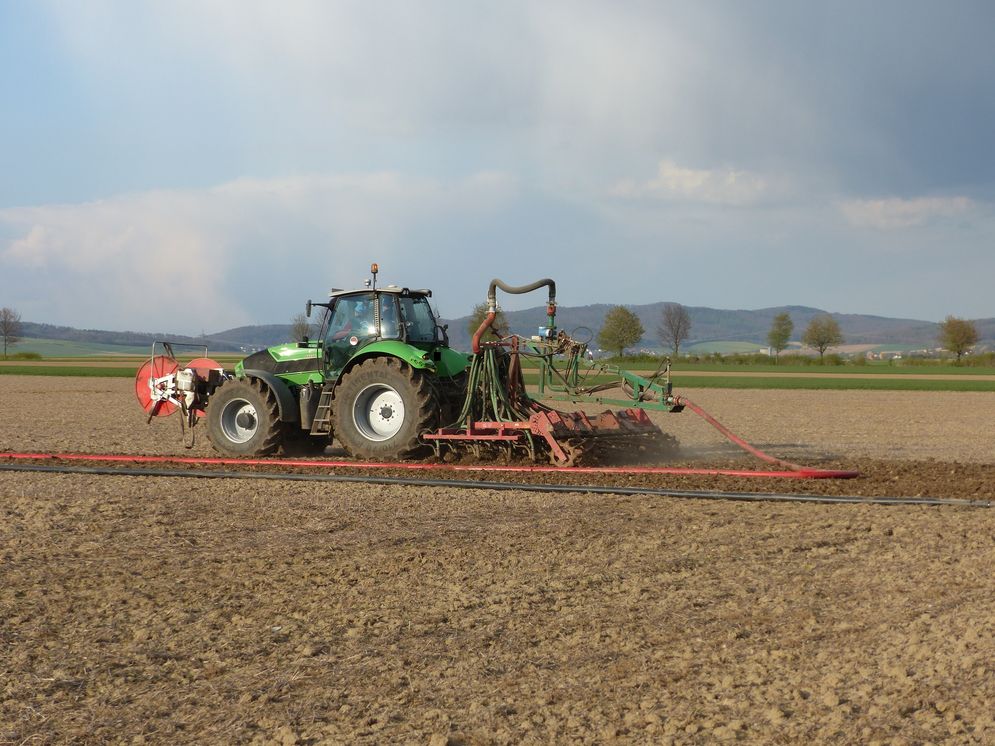
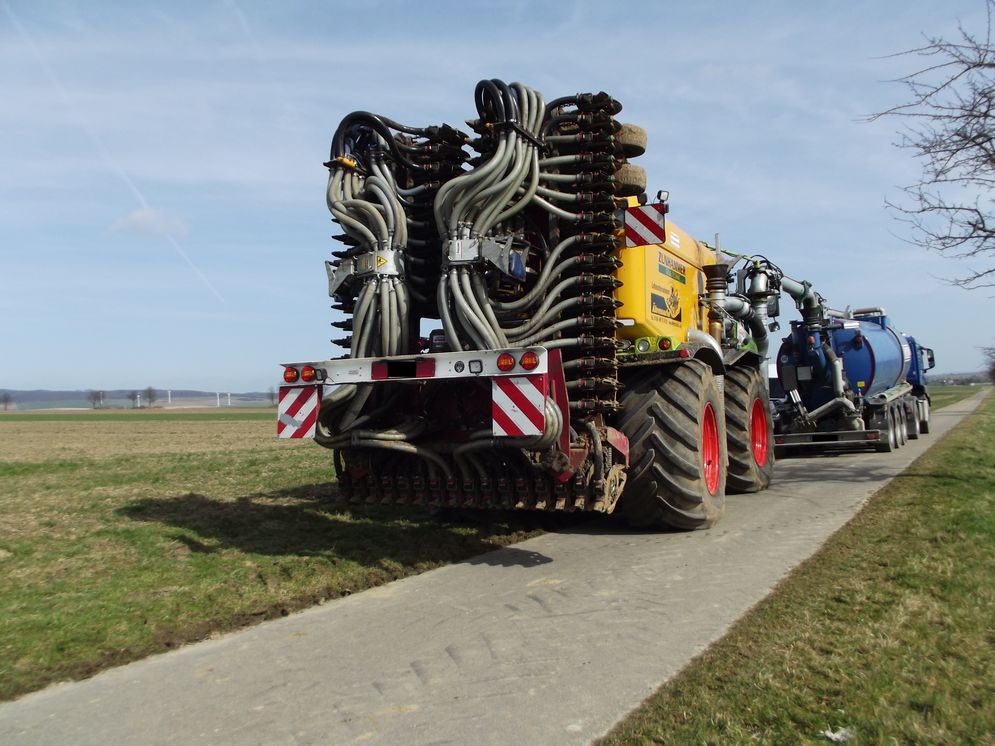
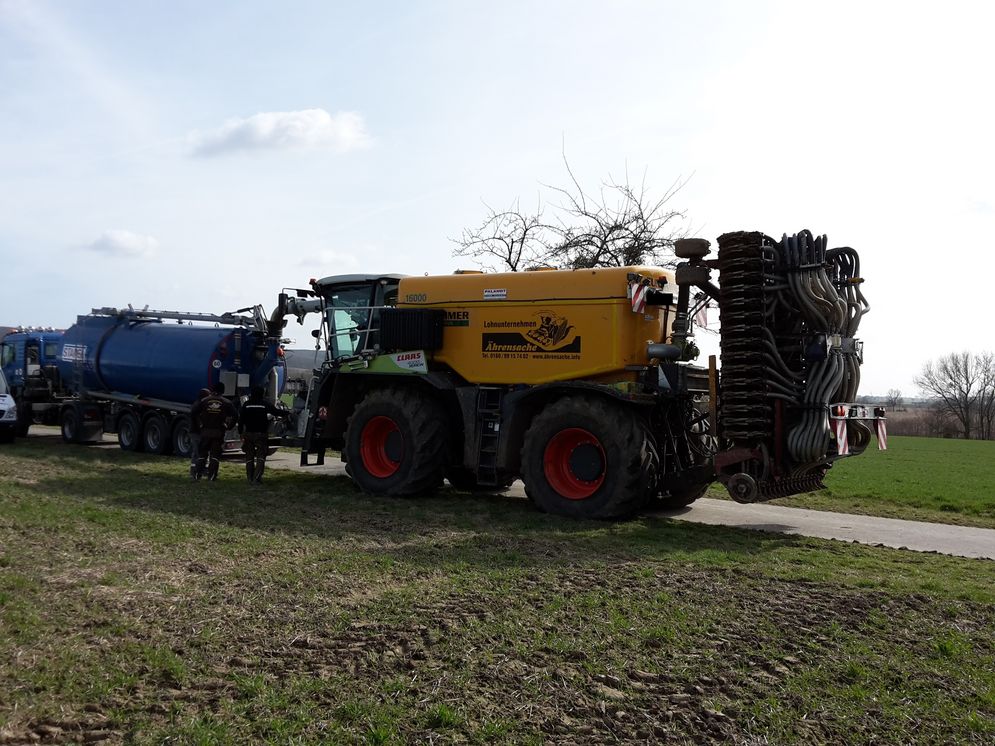
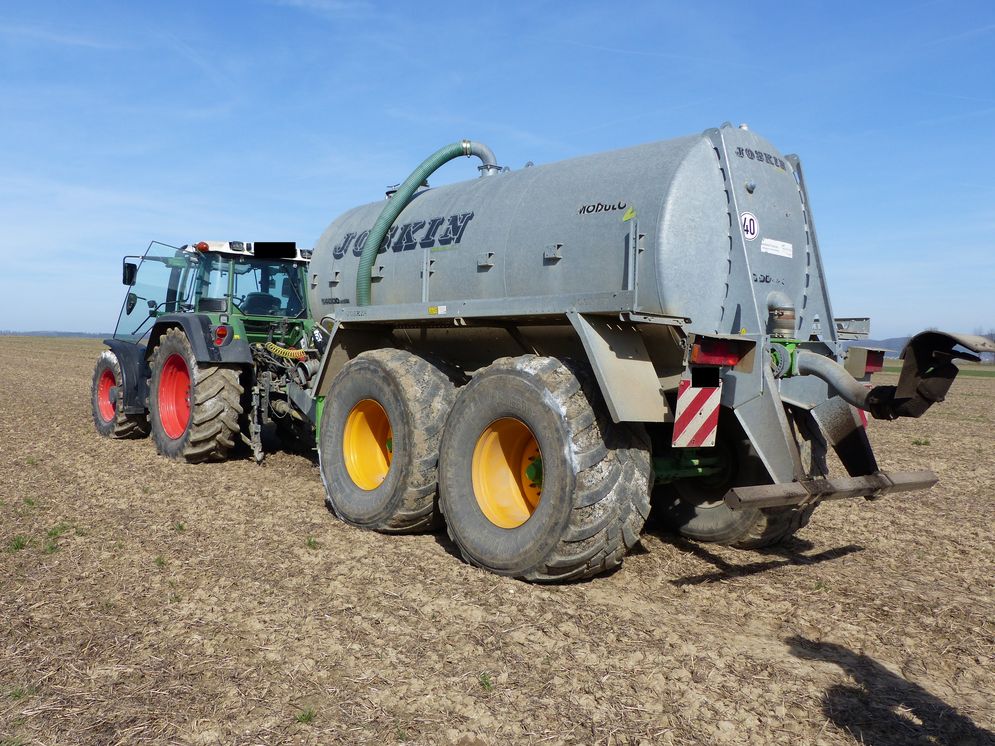
Winter wheat harvest
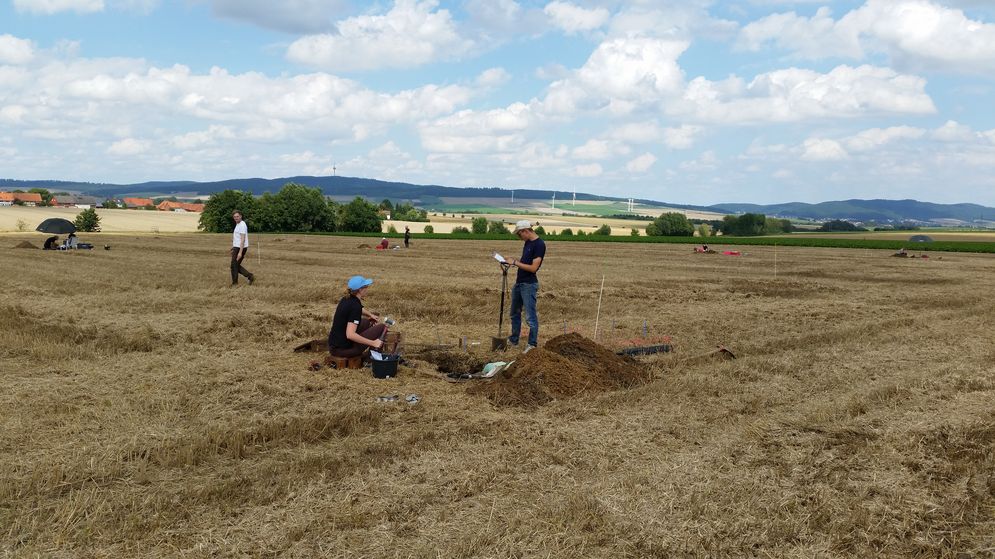
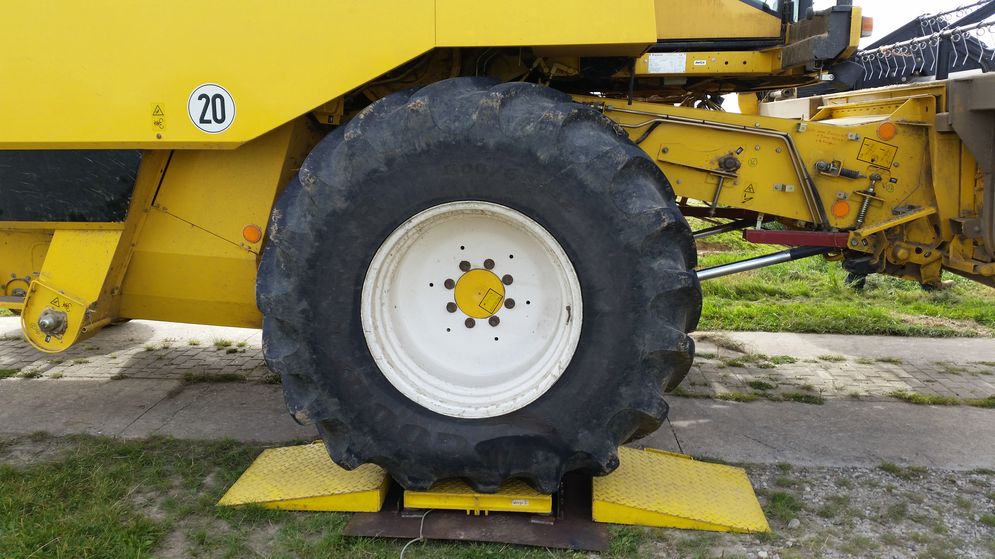
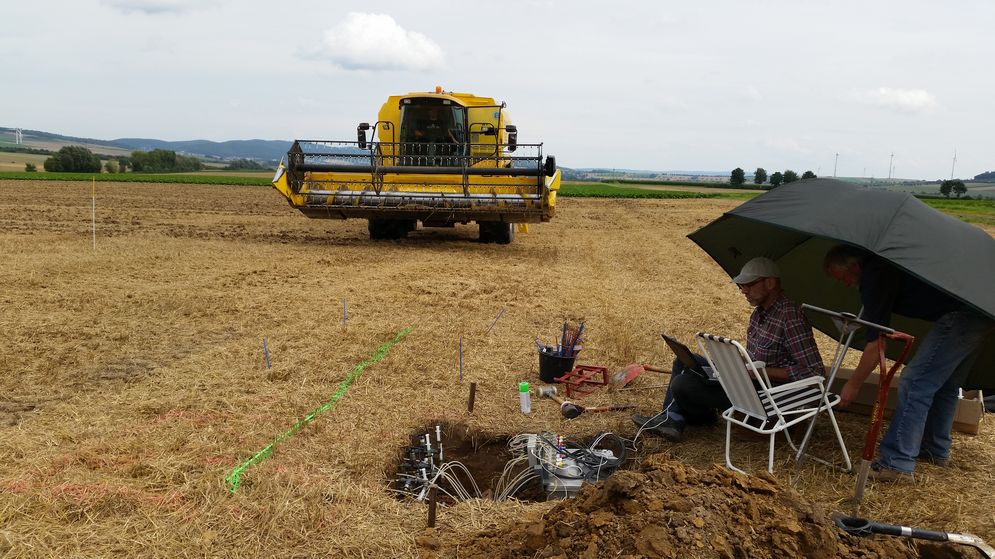
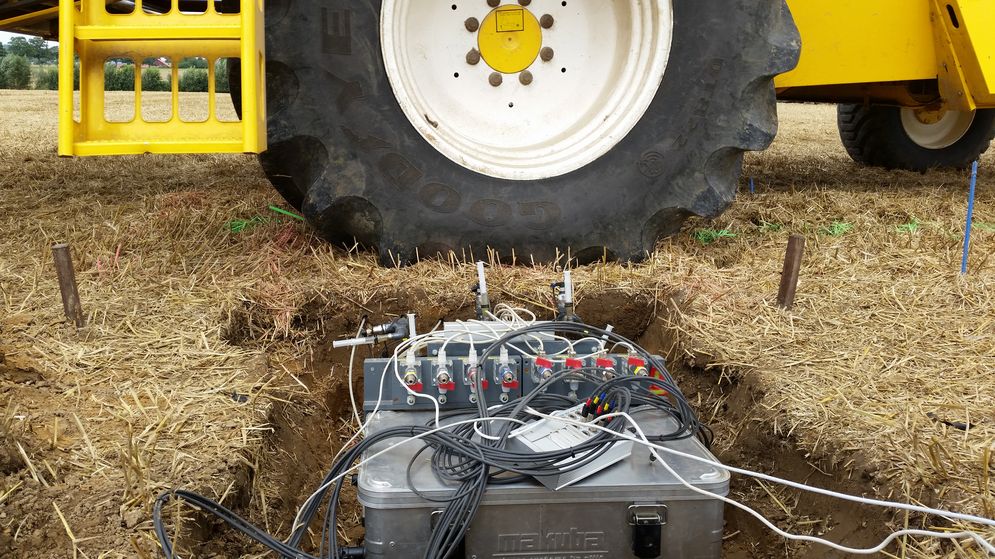
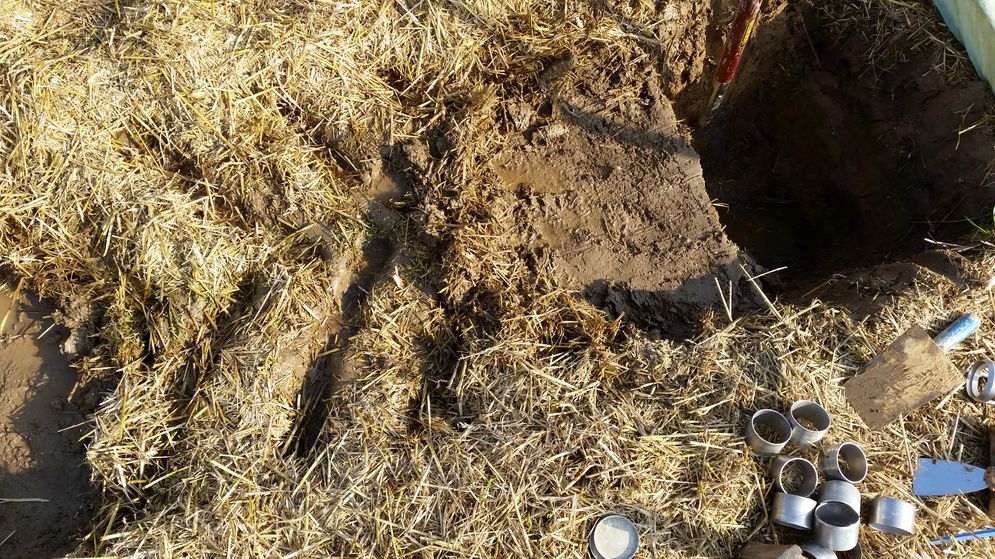
Silage maize harvest
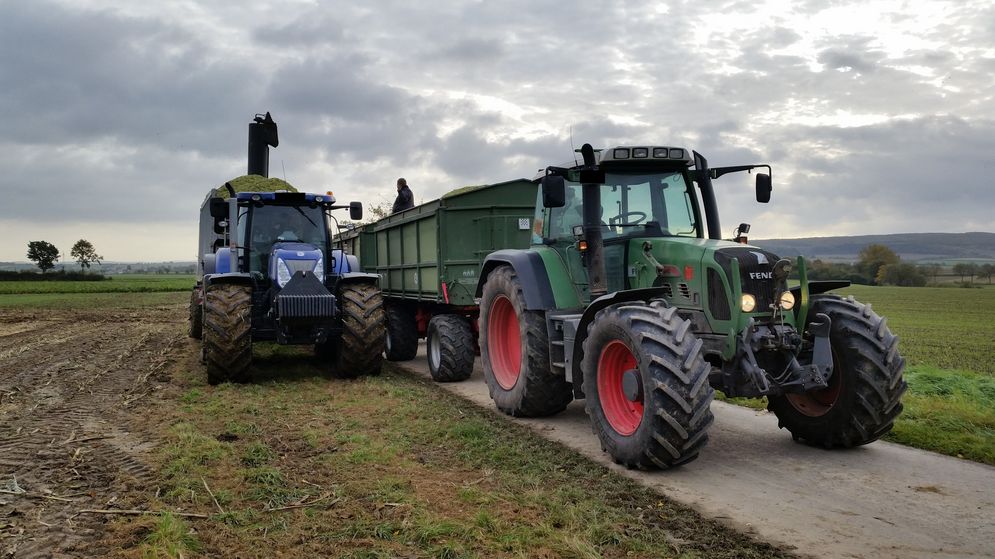
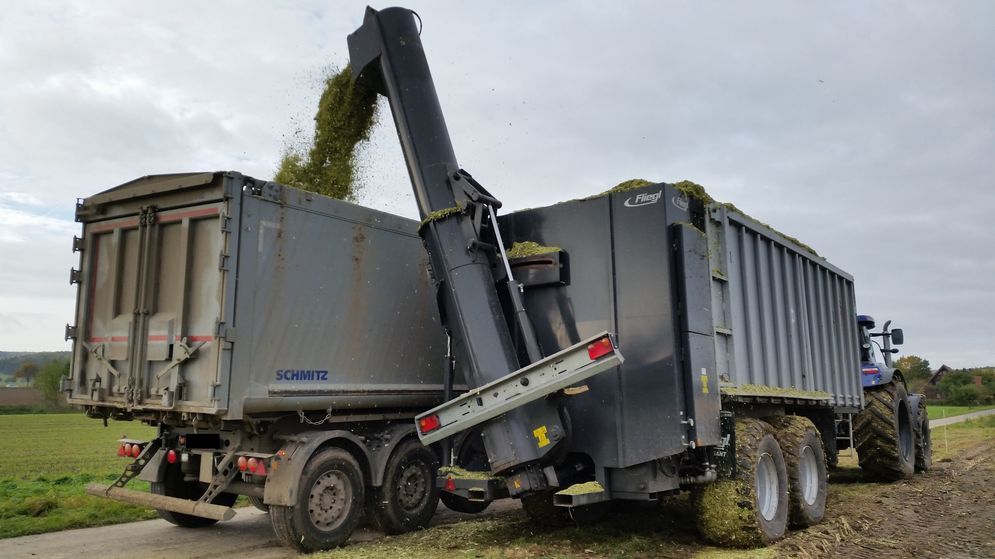
Sugar beet harvest
